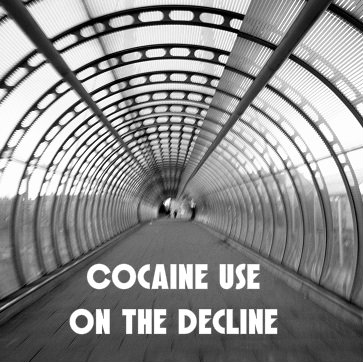Cocaine Use Is On A Steady Decline
Cocaine is a well-known, illegal stimulant drug of abuse. While short-term use of this drug can lead to serious or even fatal health problems, much of the public health focus on cocaine centers on its ability to produce addiction in chronic users. In a report presented in March 2014 to the White House Office of National Drug Control Policy, researchers from the RAND Corporation made detailed estimates of the number of chronic cocaine users in the U.S. from 2000 to 2010. Unlike most previous efforts, which include only the overall total of chronic users, these estimates also specify levels of involvement in chronic cocaine use.
Who Is Using Cocaine?
 A federal agency called the Substance Abuse and Mental Health Services Administration uses a yearly project called the National Survey on Drug Use and Health to estimate the number of people in the U.S. who use any amount of cocaine in the average month. According to the most recent figures from this survey (reported in late 2013), roughly 1.6 million adults and teenagers used the drug in a representative month in 2012. This number represents about 0.6 percent of the entire U.S. population age 12 or older. Since 2002, the highest reported rate of monthly cocaine use is 1.0 percent; the rate reached this peak in three years: 2003, 2005 and 2006. Cocaine use has been trending pretty steadily downward since 2006, with a low monthly rate of 0.5 percent reported in 2011.
A federal agency called the Substance Abuse and Mental Health Services Administration uses a yearly project called the National Survey on Drug Use and Health to estimate the number of people in the U.S. who use any amount of cocaine in the average month. According to the most recent figures from this survey (reported in late 2013), roughly 1.6 million adults and teenagers used the drug in a representative month in 2012. This number represents about 0.6 percent of the entire U.S. population age 12 or older. Since 2002, the highest reported rate of monthly cocaine use is 1.0 percent; the rate reached this peak in three years: 2003, 2005 and 2006. Cocaine use has been trending pretty steadily downward since 2006, with a low monthly rate of 0.5 percent reported in 2011.
What Are The Levels Of Chronic Use?
Chronic drug users are users who consume any given substance repeatedly over time. However, not all chronic users consume drugs with the same level of frequency. On the low end, a chronic cocaine user may consume the drug from roughly four to 10 days in any 30-day time period. Moderate to heavily involved chronic users may consume the drug from 11 to 20 days within the same time period. The heaviest chronic users consume cocaine on at least 21 days within a given month. Any chronic user runs the risk of developing (or already having) diagnosable problems with cocaine abuse or cocaine addiction (both of which are classified as specific forms of a condition called stimulant use disorder). However, as a rule, heavy chronic users have the most seriously elevated risks. In addition, heavy chronic users account for a large percentage of the overall amount of cocaine consumed in any segment of the population.
How Many Chronic Cocaine Users Are There?
In the report presented to the White House Office of National Drug Control Policy, the RAND Corporation researchers used information gathered from the National Survey on Drug Use and Health, the federally sponsored Arrestee Drug Abuse Monitoring Program and several other sources to estimate the number of Americans involved in chronic cocaine use in the first decade of the 2000s. In all likelihood, the total number of chronic users in 2010 (the last year under consideration) was roughly 2.5 million. For the sake of accuracy, the report also includes a low potential figure of 1.6 million chronic users and a high potential figure of 3.9 million chronic users. Most of the chronic cocaine users (1.3 million) consumed the drug four to 10 days per month. Another 500,000 chronic users consumed the drug somewhere in the range of 11 to 20 days per month. In addition, 600,000 chronic users consumed cocaine at least 21 days per month.
Past And Present Cocaine Use
The highest reported number of likely chronic cocaine users between 2000 and 2010 was 3.3 million in the year 2000. Totals for the following six or seven years were fairly close to this peak. However, a downward trend in the number of chronic users began in 2006 and continued through the end of the period under consideration.
The estimate of cocaine use reported by the RAND Corporation is consistently higher than the estimate provided by the National Survey on Drug Use and Health. The difference between the two projects can be broadly attributed to the wider number of sources used by the RAND Corporation researchers, and more specifically attributed to the inclusion of data from the Arrestee Drug Abuse Monitoring Program (which gathered information from people who were incarcerated or otherwise involved in the criminal justice system). The RAND Corporation researchers note that total cocaine use (among both occasional and chronic users) fell by close to 50 percent between 2006 and 2010.
Find Out How An ADHD Medication Disrupts Cocaine Addiction



